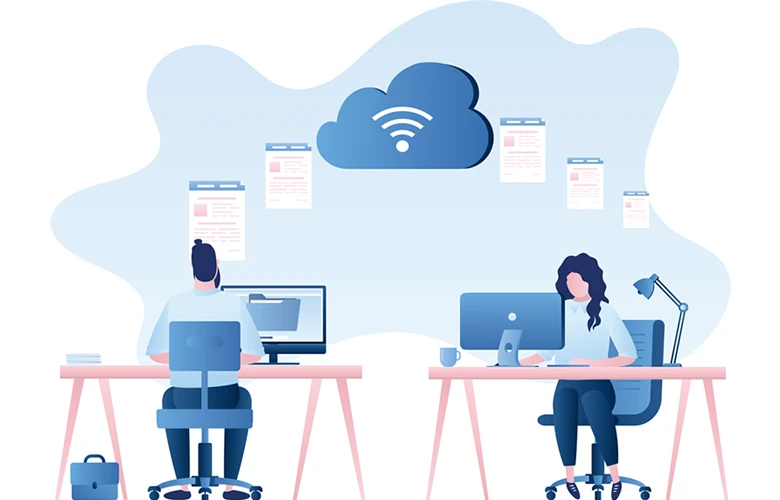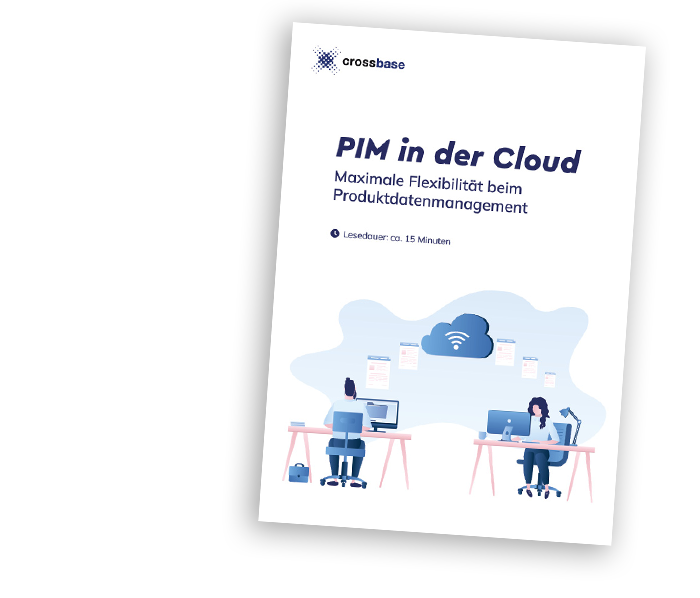I look forward to a personal consultation with you.
Call now +49 7031 9881-770
or send me a message
Herby Tessadri
Sales Manager and Authorized Signatory

Why a PIM system in the cloud is worthwhile

Michael Binder
On-premise or cloud? This is a question that many companies are currently asking themselves. Ten years ago, people were still cautious and mistrustful of the security of cloud systems, but things have changed since then: More and more companies are taking advantage of the benefits and outsourcing applications to the cloud. The obvious question is whether a PIM system can also be operated via the cloud and whether it is worth it.
I have compiled seven reasons here that speak in favor of using the cloud for a PIM system:
1. flexible server capacities ensure high performance
A PIM system usually develops gradually. You start with a sub-area, for example the provision of data for e-commerce platforms. Once this area is running smoothly, you move on to the next. Over time, other application areas are added: translation, text optimization, automated image production ... it grows and the hardware requirements grow with it. In the cloud, server capacity can be dynamically adapted to current demand. Peak loads can be easily absorbed without having to invest in additional hardware. In addition, the high scalability ensures optimal performance at all times - regardless of the number of users or the data quantity.
2. external maintenance relieves the burden on the IT department
This point is actually self-explanatory: Support, maintenance and optimization of the system are carried out by the provider and therefore do not tie up any of your own IT resources. In a way, you get an "all-round carefree package" and don't have to worry about (almost) anything.
3. the "rental model" ensures cost efficiency
A PIM system represents a major investment - the more the system is supposed to offer, the more specifically it is adapted to the company and its product structure, the more complex and expensive it becomes. Of course, the investment pays for itself after a few years (in the case of crossbase, we calculate around two and a half years until break-even is reached), but the price still represents a not insignificant financial burden for companies.
A cloud system is a good option here to significantly reduce the initial investment, as it is more like a rental model. You only pay for the onboarding, setup and training. The monthly costs for ongoing operation are then also based on your requirements package and are calculable.
4. access is possible from anywhere
Access to the cloud solution is basically location-independent - a major advantage for all companies that have many branches, even across national borders. The system is accessed via a web interface, all you need is Internet access.
As with other Internet applications, we recommend setting up two-factor authentication or company-wide IP filters for security reasons.
5. you no longer need to worry about updates
Another "all-round carefree" aspect: you no longer need to worry about security updates, new functions or improvements. With a cloud solution, this is provided directly by the provider. Everything is integrated for you seamlessly and without any additional effort. This means the system is always up to date - without any time-consuming manual installations.
6 The cloud environment offers a high level of security
But only if the provider guarantees this. We recommend: make sure your cloud provider offers a high level of security. The location of the servers is essential here - the standards in countries outside the EU are often set lower and can quickly change for the worse. Think carefully about whether you want to host all your product information and other sensitive data "somewhere in the world".
Hosting with a provider in the EU ensures that the data is protected in accordance with the strict requirements of the GDPR, and usually a little more so in Germany than in other countries. Yes, this is sometimes a little tough and time-consuming, but in the end it benefits us all. Companies also benefit from modern security measures, such as encrypted data transmission, regular backups and professional protection against cyber attacks.
7. flexibility: subsequent relocation possible
This is basically a great advantage, but one that you should always clarify. In principle, you should always be able to switch between the cloud solution and the on-premise solution without any problems - after all, you can't know today what the framework conditions might be in five or ten years' time. But be careful: not all systems allow you to do this so easily. With some providers, not all functions are offered equally on both platforms. So make sure you check!
We ourselves have attached great importance to the fact that the scope of services of the PIM/MAM system in the cloud corresponds 100% to that of a local installation. This flexibility offers investment security and allows you to adapt your PIM system to changing conditions with little effort.
Conclusion: The cloud as a future-proof solution
Opting for a cloud solution has numerous advantages: high performance, lower IT costs, automatic updates, a secure environment (as long as you use a secure provider) and maximum flexibility. So if you are asking yourself whether you can future-proof your PIM system on the cloud, the answer is yes, as long as you make sure that you can easily switch to on-premise if the worst comes to the worst. And that the functions are the same in both variants.
Remember: ideally, you will be using your system for a long time. So make sure you plan for the long term and keep all your options open!
Request white paper "PIM in the cloud"
You will receive our detailed whitepaper free of charge by e-mail. Please enter your business e-mail address here:


Michael Binder is head of consulting and support at crossbase and has over 15 years of PIM experience. As a project manager, he has helped many companies to successfully introduce or change a PIM system. He has outstanding expertise in the areas of data interfaces and print and media production in particular.
He will be happy to answer your questions: m.binder@crossbase.de

